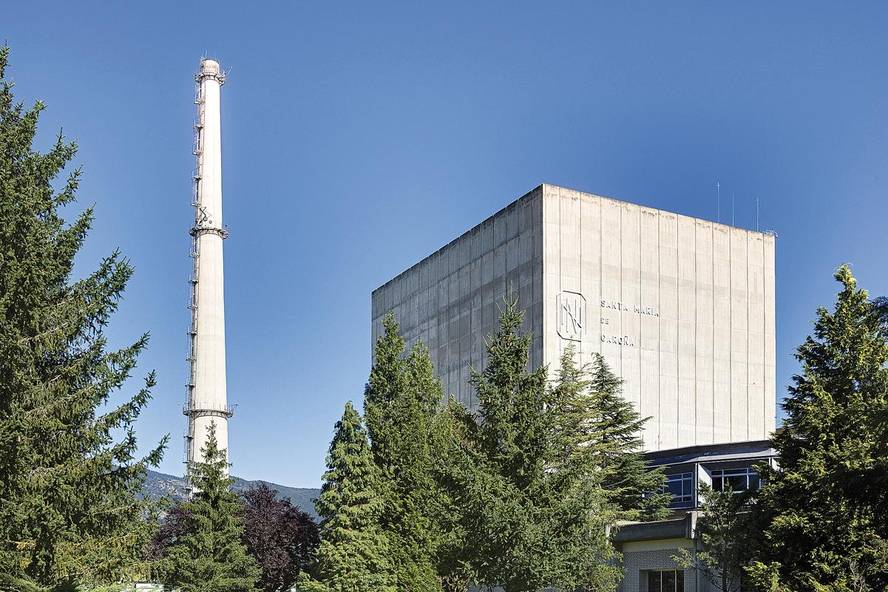Garoña, an endless history
A year ago we went to the head of the Garoña nuclear power plant to celebrate the definitive closure of the power plant. The deadline to request the extension of the life of the plant was about to end. For this reason, the annual march to the central one had an unbeatable festive atmosphere. It has been a year since then and there has been everything.
Garoña entered into operation in 1970 and is the oldest nuclear power plant in the state. The owner is Nuclenor, company formed by Iberdrola and Endesa. It is a small power plant of 460 MW that generates 1.4% of the national electricity. With a useful life of 40 years, the authorization ended in 2011, but the government then extended it until 2013. And to continue operating from 2013 they had to request a new authorization, but they let the deadline pass to do so. In fact, in order to carry out this extension, Garoña had to make a series of improvements, with a minimum budget of 120 million euros, forced by the new safety requirement derived from the Fukushima accident. The Nuclear Security Council (CSN) then published that the only solution in the plant was to close on July 6.
The need to introduce improvements was insufficient and the government modified the legislation with a nuclear fuel tax. According to Nuclenor, this tax would amount to more than 150 million euros for Garoña. Thus, at the beginning of this year the central office of Garoña was paralyzed to not pay the new tax. It seemed that, once and for all, the last pages of this endless history had been read.
But as it happens in suspense films, from day to day the argument turned around. We knew there were talks between Nuclenor and the government about the future of the power plant, and in May our suspicions came true.
The government wanted to remove a new decree that would allow the extension of the power plant and obtained the authorization of the CSN. Cristina Narbona, CSN advisor, denounced the strong pressures exerted by the government, questioning the independence of the organization.
How could it be expected that Nuclenor, after stating that months earlier there were doubts about the economic profitability of the power plants, would like it to continue functioning? The answer may be in the new electric law that the government is about to publish.
The Government had opened the way for the resumption of Garoña, but when everything was finished... they allowed the deadline to publish the new decree. It is not yet clear what happened at the time, but it seems that it was not possible to comply with the administrative deadlines to carry out this new decree.
The plant was stopped and without the possibility of requesting an extension. It had a new start-up requesting a new exploitation authorization. It should follow the whole process of commissioning a new plant, including the new environmental impact assessment. But the government did not say the last word and opened a new way. They defined the new situation called “Temporary Suspension of Exploitation” facilitating the resumption procedure. At the moment the new decree has not yet been published.
Meanwhile, the plant finalized the authorization for the cooling of the water of the Ebro river and requested its renovation. This summer the new authorization has arrived, but with it it comes demanding more than before. In the belief that the water of the Ebro river is too hot (exceeds 30ºC), the power plant should build a new cooling system or reduce its power. The latter is quite difficult for a nuclear power plant. The Almaraz nuclear power plant had to improve the cooling system, with the same demands as Garoña, with an investment of 30 million euros.
At this moment, therefore, the future of Garoña is in the air. You could request a new exploitation authorization, but in this case you would have to carry out costly renovation works: The transformation due to the accident of Fukushima would cost at least 120 million euros and the new cooling system to avoid heating the Ebro river, another 30 million euros. In addition, it should pay a new tax for the management of nuclear fuel, which Nuclenor estimates at 150 million euros. It can be too much money for an obsolete plant of such low production. Remember that the plant was designed for 40 years of operation and that in recent years has had many technical problems. Therefore, despite having obtained the authorization of resumption, it seems that it would be for a few years, so the deadline would not be enough to amortize the rehabilitation works.
All this generates doubts. In short, why so much movement between government and company to extend the life of such a small plant? At the end of the life of the central Zorita, this kind of problems did not arise. The main difference between both cases is that we are currently waiting for a new electric law. It is possible, therefore, that in this dispute between Nuclenor and the government there is something more to continue in progress Garoña, and that only one of the pieces on the Sunday table is the proposal to close several combined cycle plants in the new Electric Law and the payments by capacity will be recalculated. Nuclenor may be negotiating with the government to achieve an advantageous situation in this new legislation in exchange for the closure of the Garoña power plant.







